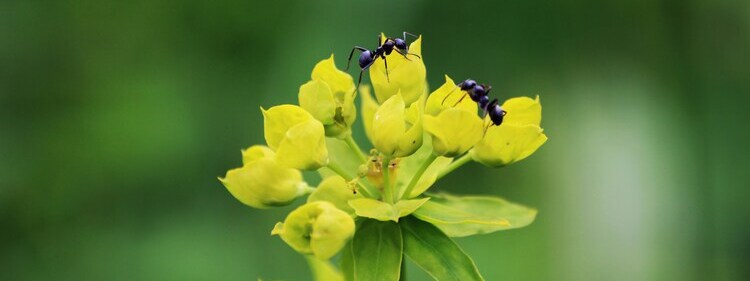
Image Source: Unsplash
Ants, with their industrious nature and bustling colonies, are some of the most common inhabitants of gardens around the world. Over 20 quadrillion of them live around us and given their important position at the foundation of the food pyramid, it’s safe to say we want them around for a long time from now on. However, if you’ve ever tended a garden, you know ants can become a tad bit invasive at times.
While we can’t deny that ants and plants have always had a tight and complex relationship, with some people perceiving them as beneficial allies aiding in pollination and pest control, others fear their presence may spell trouble for garden greenery.
This leads us to the main question: are these tiny hard-working creatures friends or foes to our cherished plants? The answer may be more complex than a yes or a no.
Throughout this article, we will navigate the dual role ants play in garden ecosystems, shedding light on both their positive contributions and potential drawbacks. From their role as diligent pollinators to their tendency to cultivate and defend pests, we’ll uncover the multilayered dynamics at play.
As we embark on this journey, it becomes clear that effective ant management requires a holistic perspective – one that prioritises the long-term health and vitality of both plants and the wider garden ecosystem.
Keep reading to discover the key to fostering harmony between these industrious insects and our beloved plants.
Ants And Plants – A Symbiotic Relationship

Image source: Unsplash
While they might seem like pesky nuisances at first glance, ants are doing a lot more for your garden than you might realise. Put simply, they help plants in two main areas: reproduction and protection against bigger, nastier pests. Now let’s take them one at a time.
Ants – The Pollinators
Ants are not just diligent workers, able to carry 10 times their weight, but they also contribute tremendously to pollination and seed dispersal, even though they don’t know it. Certain plant species have coevolved with ants, developing specialised adaptations to attract and utilise them for reproduction. Ants inadvertently transfer pollen between flowers as they forage for nectar, facilitating the fertilisation process. Plus, when ants carry seeds back to their nests, they are helping those seeds find nutrient-rich environments where they can grow.
Ants – The Protectors
Beyond their role in reproduction, ants also serve as formidable defenders of plants against herbivorous pests. Some ant species form mutualistic relationships with plants by patrolling their leaves and stems, warding off insects that would otherwise feed on them. In exchange, these plants provide food and shelter for the ants, creating a mutually beneficial arrangement known as myrmecophily. Who needs a garden security system when you’ve got ants on patrol?
Keeping Predators At Bay
We touched a bit on ants’ amazing pest control skills, but on a larger scale, things are even more impressive. When it comes to keeping pesky insects in check, ants are top-notch predators. They have a keen eye for spotting smaller insects and an enthusiastic appetite for munching on them. Whether it’s tiny parasites sucking the life out of your plants or caterpillars chomping away at your foliage, ants are on the case, gobbling up pests like tiny garden guardians.
Ecosystem Engineers
Last but not least, let’s marvel at ants’ architectural expertise. Certain ant species are master builders, constructing elaborate nests and galleries that shape the physical landscape of your garden. From underground tunnels to towering mounds, these miniature engineers create intricate structures that provide shelter and protection for their colonies. But their impact extends beyond their own homes. As ants excavate soil and build their nests, they inadvertently create microhabitats for other organisms, like earthworms, beetles, and microorganisms. These cosy nooks and crannies become hotspots of biodiversity, fostering a thriving ecosystem right beneath your feet. So, from now on, when you stumble upon a bustling ant colony, take a moment to appreciate the remarkable engineering feats happening right in your own backyard.
So, as you can see, ants are essential players in natural ecosystems everywhere, our beloved gardens included. By understanding and appreciating their contributions, we can create gardens that thrive with vibrant plant communities and buzzing biodiversity.
The Pitfalls – Potential Harm Caused By Ants
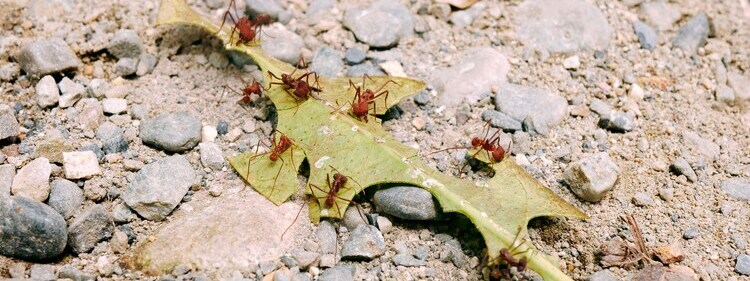
Image source: Unsplash
While ants offer numerous benefits to garden ecosystems, their presence can sometimes lead to unintended consequences that may adversely affect plant health and overall garden vitality. And sometimes, it’s exactly their good deeds, like the complex galleries that aerate the soil or their help in pollination, that can turn into pitfalls.
Understanding the potential harm caused by ants is essential for effective garden management and pest control. So when can ants become detrimental to plants?
“Farming” Other Pests
One of the most well-known negative interactions between ants and plants involves ants “farming” aphids and other sap-sucking insects. While they work wonders in protecting plants from certain parasites, some ant species have a mutualistic relationship with aphids, mealybugs, and other plant-damaging insects. These ants protect and “farm” these pests, feeding on the honeydew they produce. As a result, the presence of ants can lead to increased populations of aphids and other pests, which can cause damage to plant foliage, stunted growth, and reduce overall plant health.
Nesting In Root Systems And Plant Containers
Certain ant species may establish nests in plant containers or directly within the root systems of both potted plants and garden beds. As ants excavate soil and create tunnels, they can disrupt root structures, inhibit water and nutrient uptake, and weaken plant stability. Additionally, ant nests in plant containers may overcrowd the root space, leading to competition for resources and poor plant growth.
Damaging Plant Parts
In their quest for food and shelter, ants may inadvertently cause damage to various parts of plants. This can include gnawing on tender shoots, flowers, or fruit, causing physical injury and reducing the aesthetic appeal of plants. Additionally, ants may create pathways on plant surfaces, leaving behind chemical trails that attract other ants and potentially facilitate the spread of pests and diseases.
Interfering With Other Pollinators
While some ant species contribute to pollination through their foraging activities, others may inadvertently interfere with the process. Ants attracted to floral nectar may disturb pollinators such as bees and butterflies, competing for resources and potentially disrupting pollination dynamics. In extreme cases, dense ant populations around flowers may deter pollinators altogether, leading to reduced fruit set and seed production in plants.
Overall, while ants play valuable roles in garden ecosystems, it’s essential to monitor their activity and intervene when their presence poses a threat to plant health and productivity. Implementing integrated pest management strategies and promoting a balanced ecosystem can help mitigate the negative impacts of ants on plants.
However, if you happen to stumble upon bull ants, the largest species of ants Australia is home to, it’s best to keep them away or use protective gear if you plan to remove them from your garden. Their sting is quite painful and the venom can cause serious allergic reactions.
When to take action – excessive ant populations
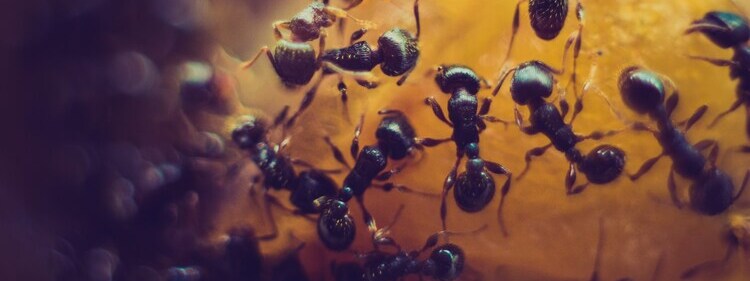
Image source: Unsplash
Excessive ant activity may indicate an imbalance in the garden ecosystem, necessitating intervention to restore harmony and protect plant health. Excessive ant populations in gardens can be caused by various factors, ranging from environmental conditions to human activities. Understanding these factors and knowing how to spot the signs of an impending ant infestation can help you take proactive measures to manage ant populations effectively before they turn into tiny invaders.
Causes of excessive ant populations
- Availability of food sources – Ants are opportunistic feeders and will thrive in environments where food is abundant. Leftover crumbs, spilt pet food, and sugary substances can attract ants to gardens, providing them with a readily available food source. So next time you’re having a barbeque or picnic in the garden, make sure you’re taking those food leftovers to the bin.
- Environmental conditions – Warm temperatures and high humidity create favourable conditions for ant reproduction and colony expansion. In regions with mild climates, such as coastal areas of Australia, ants can thrive year-round, leading to rapid population growth if left unchecked.
- Human activities – Sometimes, we’re the ones to blame for the ant invasion in our gardens. Human activities, such as improper waste disposal and overwatering, can exacerbate ant infestations in gardens. Piles of organic debris, such as fallen leaves and rotting wood, provide ideal nesting sites for ants. Overly moist soil conditions can also create hospitable environments for ants, allowing them to more easily develop thriving colonies.
How to spot the signs of excessive ant population?
Keep an eye out for ant activity and nesting behaviours. Trails of ants leading to food sources or nesting sites are a sure telltale sign of an ant infestation. You may also notice ant mounds or nests in soil, mulch, or plant containers.
Regular monitoring of ant activity and prompt intervention are key to managing excessive ant populations in gardens. Implementing integrated pest management strategies, such as removing food sources, sealing entry points, and using eco-friendly ant baits, can help control ant populations while minimising harm to the garden ecosystem.
By staying vigilant and taking proactive measures, you can maintain a healthy balance in your garden and prevent ant infestations from spiralling out of control, which leads us to the next topic on our list.
Finding Balance – Coexisting With The Ants In Your Garden
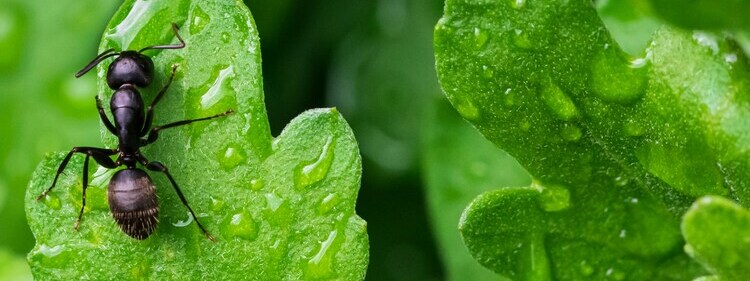
Image source: Unsplash
Creating a garden where ants and plants peacefully coexist isn’t about waging war; it’s about finding a friendly balance.
As we’ve already established, ants can be very beneficial to the garden if kept under control. So, instead of reaching for the bug spray at the first sign of ants, consider exploring some gentle strategies to manage their presence while keeping our garden ecosystem in tip-top shape.
To do so, it’s time to create a pest management plan – think of it like your garden’s own personalised wellness plan, which promotes a mindful approach to keeping ant colonies under control. By considering all aspects of ant management, from their behaviours to environmental factors, you can tailor solutions that address the root of the issue and do not harm the environment.
Swapping harsh chemicals for thoughtful tactics like creating ant-deterring barriers and encouraging natural predators to lend their help are just two of the main points that should be on your checklist. Let’s explore more!
Promote Natural Allies
Just like having a buddy to spot you during a workout, inviting natural predators into your garden can keep ant populations in check. Birds, ladybugs, and praying mantises are like the A-team of pest control, ready to swoop in and lend a hand… or a beak. Setting up bird feeders around your garden to attract birds, especially above ant nests, can lead to strong alliances.
Set Some Organic Boundaries
Sometimes, a little boundary-setting is all it takes to keep ants at bay. Sprinkle some diatomaceous earth or lay down copper tape to create no-go zones for ants. And why not add a touch of mint or lavender to your garden beds? Not only will they smell heavenly, but they’ll also send ants packing.
Put Up Some Eco-Friendly Baits And Traps
When ants still march where they shouldn’t, it’s time to lead them astray with eco-friendly baits and traps. These clever contraptions lure ants away from your precious plants with tempting treats, giving them a one-way ticket out of your garden without harming other critters. A few options include:
- Water and vinegar solution: placing a shallow container with equal parts water and vinegar near ant trails or entry points can disrupt the ant’s scent trails and prevent them from returning.
- Citrus peel barrier: the strong scent of citrus is a natural repellent for ants, so save up peels from various citrus fruits and place them around your garden.
- Coffee grounds: again, we’re focusing on disrupting the ants’ scent trails, and the strong scent of coffee works wonders if sprinkled around the areas where ants can enter your garden.
Cultivate Healthy Habits
Just like you’d tidy up your home to keep unwanted guests at bay, maintaining a clean and dry garden environment can discourage ant invasions. Sweep away crumbs, seal up entry points, and keep standing water to a minimum. Your garden will thank you for the tidiness, and ant infestation will be less likely to happen!
By embracing these gentle approaches to ant management, you’re not just keeping your garden pest-free – you’re fostering a harmonious ecosystem where ants and plants can thrive together. So, let’s raise our watering cans to a garden where peace, balance, and biodiversity thrive!
Understanding The Bigger Picture – A Holistic Approach To Ants and Beyond
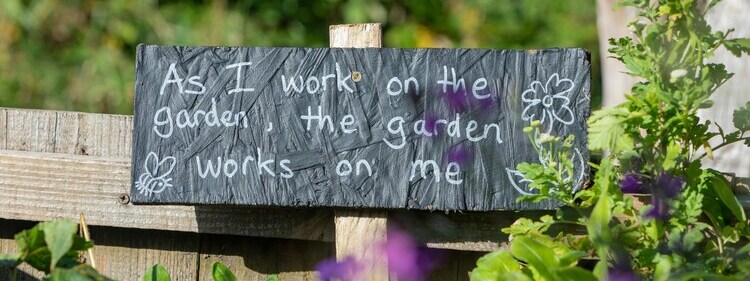
Image source: Unsplash
By now, we’ve learned that ants can be great friends for our plants, but without proper care, they can also turn into foes. One of the best methods for creating a thriving ecosystem in your garden, which fosters life and harmony, is to gain a deeper understanding of how everything in your garden works together.
Garden life is nothing short of wonderous – a place where every creature has a part to play in its growth and vitality. Among them, ants stand out with their fascinating connections to plants and other garden dwellers, highlighting the intricate web of life that sustains our green spaces. Let’s dive into the heart of this interconnectedness and explore how taking a holistic view can lead to flourishing gardens.
Embracing Ecological Relationships
Picture your garden as a bustling community where ants, plants, and a myriad of other inhabitants mingle and interact. Each organism, from the tiniest ant to the tallest tree, is part of a delicate weave that shapes the ecosystem. By recognising these interconnected relationships, you can gain a deeper understanding of how every action reverberates through the entire community.
Now, zoom in on the ants – those industrious little insects bustling about with purpose. They’re not just random visitors; they’re integral members of this bustling community. Picture them as diligent workers tending to their tasks, whether it’s pollinating flowers or safeguarding plants from pesky pests. Each tiny ant contributes its part to the intricate interactions that sustain the ecosystem.
As gardeners, it’s essential to tune into this symphony of activity and recognise the profound connections that exist between every organism. When we understand how ants, plants, and other residents interact, we gain a deeper appreciation for the delicate balance that keeps our garden thriving. Just like how ants pollinate flowers or protect plants by warding off hungry pests, each action sets off a chain reaction that reverberates through the entire community.
So, the next time you spot ants scuttling through your garden, take a moment to be grateful for their contribution to the greater ecosystem. They’re not just tiny insects; they’re essential players in the grand performance of garden life.
Championing Biodiversity Conservation
Preserving biodiversity within your garden is like adding a secret ingredient to a recipe – it enhances the overall flavour and makes everything more robust. Just like a diverse menu appeals to a wide range of tastes, a garden teeming with different species can better withstand the ups and downs of Mother Nature.
Now, let’s shine a spotlight on our tiny friends, the ants. These industrious insects aren’t just passing through, they’re vital members of your garden community. They occupy various roles and niches, from tunnelling through the soil to scavenging for food and even serving as pollinators. Their presence adds depth and complexity to your garden’s ecosystem, much like the different ingredients in your favourite dish.
How do ants contribute to biodiversity?
Well, imagine your garden as a bustling marketplace, with each species setting up shop in its own corner. Ants, with their diverse behaviours and habits, fill several niches in this marketplace. Some species nest underground, aerating the soil and improving its structure, while others forage aboveground, keeping pests in check and dispersing seeds. Like a well-oiled machine, each species performs its role, contributing to the overall resilience and vitality of the ecosystem.
Now, let’s talk about resilience. Just as a diverse team can tackle challenges from different angles, a biodiverse garden can better weather the storms of environmental stressors and disruptions. By fostering a variety of habitats and minimising disturbances, you can create a safety net for your garden’s inhabitants. From providing shelter for beneficial insects to offering food sources for birds and small mammals, a biodiverse garden is like a cosy refuge where every creature thrives.
So, next time you’re tending to your garden, think of it as more than just a collection of plants, it’s a vibrant ecosystem where every species plays a vital role. By nurturing biodiversity and embracing the contributions of creatures big and small, you’re not just creating a beautiful garden, you’re fostering a resilient sanctuary where life can thrive, no matter what challenges come its way.
How To Create A Balanced And Thriving Garden Environment

Image Source: Unsplash
While ants are the focus of this discussion, we can’t pass on the opportunity to dive deeper into the importance of gardens as ecosystems. Creating a balanced environment, where everything has purpose and flora and fauna help one another is the best way to ensure your garden thrives and issues such as ant infestations are no longer a thing.
Wondering how to achieve this sort of balance? Here are some ideas that can be easily put into practice:
Native Plant Selection
Think of native plants as the superheroes of your garden—they’re perfectly adapted to the local climate and soil conditions, making them resilient and low-maintenance. By choosing native species, you’re not just beautifying your garden; you’re providing essential resources for local wildlife, including our tiny ant friends. Plus, less time spent fussing over high-maintenance plants means more time to enjoy your garden!
That’s not to say you can’t enjoy some more exotic additions to your green oasis, but make sure to keep native plants as the backbone. In Australian climates, for example, acacia, wattle, daisies, and bottlebrush are some very popular choices.
Habitat Enhancements
Think of it like creating a five-star resort for your garden guests! By adding features like ponds, hedgerows, and native plant borders, you’re rolling out the red carpet for wildlife, including those helpful ants. These diverse habitats offer everything from cosy nesting spots to gourmet foraging opportunities, supporting a thriving ecosystem right in your backyard.
The best part is you can adapt this to fit any needs you garden may have. Not enough ants? Rock piles and logs can create cosy hideaways for ants to establish their colonies. Too many ants? Seed feeders can attract birds, which will make sure to keep ant colonies under control. It’s a win-win for you and your garden guests!
Companion Planting
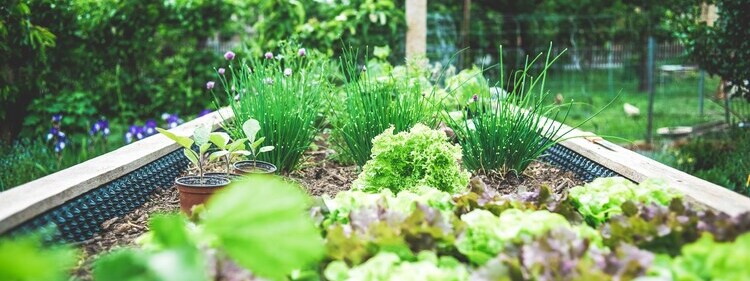
Image Source: Unsplash
Ok, this one may not have much to do with ants, but it’s so important for a balanced garden that we simply had to include it. It’s like hosting a garden party where everyone gets along! Companion planting involves pairing plants that benefit each other. Tomatoes and basil work great together, as basil’s strong aroma repels pests, sage can be planted next to carrots to prevent carrot pests, and your cucumbers would benefit greatly from having some tall plants such as sunflowers around, to provide support and shade.
By strategically placing plants with complementary traits, you can naturally repel pests, improve soil health, and maximise space in your garden. It’s like having your own little ecosystem, where each plant plays a unique role in the garden drama.
Encourage Diversity in Ground Cover
Mix it up with a variety of ground cover plants to create lots of options for ants. Different species of ground cover provide food sources, nesting materials, and shelter for ants, promoting a healthy ant population in your garden. Plus, a diverse ground cover helps suppress weeds and improve soil health, creating a lush and vibrant garden landscape.
Use Chemical-Free Pest Control
If you want to do yourself and your plants a favour, say goodbye to harsh chemicals and hello to eco-friendly pest control! By opting for natural alternatives like neem oil, insecticidal soaps, and homemade garlic sprays, you can keep pesky pests at bay without harming beneficial insects like ants. It’s a gentler approach that keeps your garden happy and healthy, inside and out. And, if you’re on the other side of the fence and looking for something to actually help keep ants under control, you need to try some of the solutions we provided previously in this article.
Create Ant-Friendly Areas
Give your ant buddies a cosy place to call home! Incorporate features like rock piles, fallen logs, and brush piles into your garden design to provide nesting sites and shelter for ants. These habitats not only support ant populations but also attract other beneficial insects that contribute to a thriving ecosystem.
If you are looking to attract ants, compost piles are the way to go, as they provide food, moisture, and shelter for ants, helping to boost their populations and activity in the garden. Plus, keeping a compost pile in your garden not only creates a nutrient-rich environment that ants find irresistible but also recycles organic waste, which your plants are going to love.
Water Conservation Practices
Saving water isn’t just good for the environment—it’s good for your garden too! By implementing water-saving techniques like mulching, drip irrigation, and collecting rainwater, you’re not only reducing your water bill but also creating a more resilient garden. Plus, critters will thank you for providing them with a cool drink during hot summer days! Keep in mind that overwatered, soggy garden soil can promote ant infestation – even more reason to be mindful of the amount of water you use!
FAQ
What do ants eat?
Ants eat whatever humans eat, both plants and animals, so they are omnivores. Some examples of plant-based foods that ants enjoy include nectar, fruits, fungus, leaves, vegetables, and anything sugary. Ants also eat animal-based foods such as insect eggs, insects, amphibians, and lizards.
How to get rid of ants?
There are many ways to get rid of ants and it is important to always choose eco-friendly solutions that will not harm the environment or other beneficial insects and animals. Some examples of safe ways to get rid of ants include diatomaceous earth, ground pepper, tea tree oil, peppermint, vinegar, essential oils, neem oil, etc.
How long do ants live?
In general, ants have a short life span, and their longevity depends on the surrounding environment, the species, and their role in the colony. Some colony members, such as the male ants, live just a few days, while others, such as the queen ants can live for several years. Different species of ants will have different life spans, so a fire ant will only live for a few weeks, while the odorous house ant can live for several years.
In Conclusion
In the beautiful synergy that unfolds in our garden, ants play both the roles of companions and challengers to our flourishing plants. As we’ve delved into their world and observed their interactions, we’ve uncovered the intricate dynamics that shape the delicate balance between ants and the botanical realm.
From their tireless efforts as pollinators and guardians against plant-munching pests to the potential hiccups caused by their farming antics and bustling activities, ants showcase the complex set of interactions within our gardens’ inhabitants. Yet, amidst this complexity, there’s a simple truth that shines through: the importance of finding harmony and taking a gentle approach to managing ant populations.
This article is meant to embrace a holistic perspective that goes beyond viewing ants as mere pests or allies. Instead, let’s celebrate the interconnectedness of all living beings within our garden. By fostering environments that nurture biodiversity, bolster ecological resilience, and prioritise the long-term health of our green spaces, we create more than just gardens—we create sanctuaries of life.
So, let’s take the lessons learned from the complex relationship of ants and plants and integrate them into the root of our gardening practices. By honouring the wisdom of nature’s design and tending to our landscapes with care and respect, we continue to cultivate gardens that hum with vitality!



No Comments